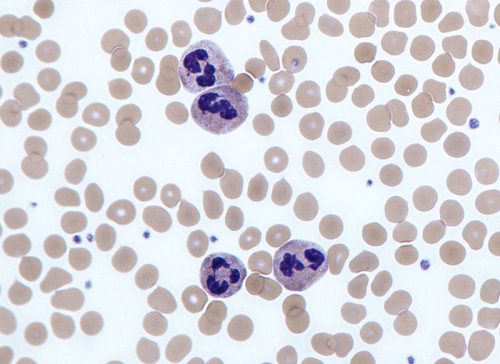Image courtesy of Wikimedia Commons.
In a study published in Nature Medicine, scientists at Stanford used single cell RNA sequencing to study changes in RNA expression levels in blood cells in control and COVID-19 patients. The immune system is made up of a vast array of different cells, each performing a specific function. These different types of cells can be identified using a snapshot of the RNA being expressed in a cell. By using RNA sequenced at the individual cell level, scientists can get a clearer picture of the types of cells being produced by the body and their functions.
Using this technique, the researchers identified a new type of immune cells, which they call “developing neutrophils”, that are uniquely found in patients that develop acute respiratory distress syndrome (ARDS), a dangerous condition that often requires patients to receive mechanical ventilation. According to the authors, these cells are related to plasmablasts, another type of immune cell. The researchers also found evidence that interferon pathways (immune programs that protect our cells against foreign genetic material) were reduced in COVID-19 patients, which matches other reports of this reduction.
Single cell analysis provides powerful insight into the population of cells in a patient. By applying this analysis to COVID-19 patients, scientists have discovered cellular changes that help us understand the effect SARS-CoV2 has on our bodies.

